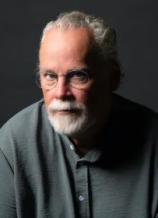The Narrows
Review
The Narrows
There has been a great deal of prepublication hype concerning THE NARROWS, Michael Connelly's new Harry Bosch novel. Most of it centers on the fact that it is a sequel to THE POET, Connelly's tale from some years ago about Robert Backus, an FBI profiler who himself turns into a serial killer. While sequels usually disappoint in direct proportion to the degree of their public anticipation, THE NARROWS is a welcome exception. It may well be Connelly's best work to date.
What has not been noted about THE NARROWS is that it is also a sequel of sorts to BLOOD WORK. BLOOD WORK is perhaps Connelly's best-known novel due in large part to its film adaptation by Clint Eastwood. The movie, interestingly enough, is mentioned in THE NARROWS. Connelly in fact breaks on through to the other side at several points during THE NARROWS, bringing an immediacy and reality to the tale that is quite refreshing. Always a masterful storyteller, Connelly continues to improve as a writer. He switches quite effortlessly in perspective back and forth between Bosch and FBI Agent Rachel Walling, whose career took a disastrous reverse due to the events chronicled in THE POET. A lesser craftsman would have ultimately made a mess of things, but Connelly keeps things moving smartly and coherently with nary a misstep.
THE NARROWS begins with Harry Bosch investigating the death of his old friend, Terry McCaleb, at the request of McCaleb's widow. McCaleb, who was the subject of BLOOD WORK, has succumbed to an apparent heart attack. His widow, however, has found that someone had in fact tampered with McCaleb's heart medication, leading to his death. During the course of the investigation Bosch learns that McCaleb, while freelancing as a consulting investigator, may have stumbled across The Poet, who appears to be responsible for McCaleb's death. McCaleb's file notes also indicate that he has a theory regarding the fates of six men who mysteriously disappeared while visiting Las Vegas.
Bosch begins to follow the trail created by McCaleb's theory, a trail that leads to an FBI investigation of a series of burials in the Nevada desert --- an investigation that commenced with a mysterious message from The Poet, directed to Rachel Walling. Walling is begrudgingly brought into the FBI investigation as an observer, and when Bosch interjects himself into the proceedings the two of them become an unlikely and unofficial, but highly effective, team. While they are tracking Backus, he is also tracking them, along a trail of his own devise and choosing. Backus has unfinished business from the past that he fully intends to complete, and he wants to do it right under the noses of his pursuers. All business and trails end at THE NARROWS.
While THE NARROWS is a dark and grim book in many ways, Connelly occasionally gives a wink and a nod to savvy readers as an indication that he is not taking himself too seriously. In addition to the references to the Blood Work film, Connelly name checks several mystery writers --- there is a George Pelecanos reference that is subtly hilarious --- and uses Bosch's new knowledge of his fatherhood to pay tribute to a popular television cartoon character whose demeanor is totally at odds with the grim goings-on in THE NARROWS. Alert readers will also catch fleeting allusions to some of Connelly's past books besides BLOOD WORK and THE POET.
Ultimately, THE NARROWS is a novel that on many different levels lives up to its hype and surpasses it.
Reviewed by Joe Hartlaub on January 12, 2011





